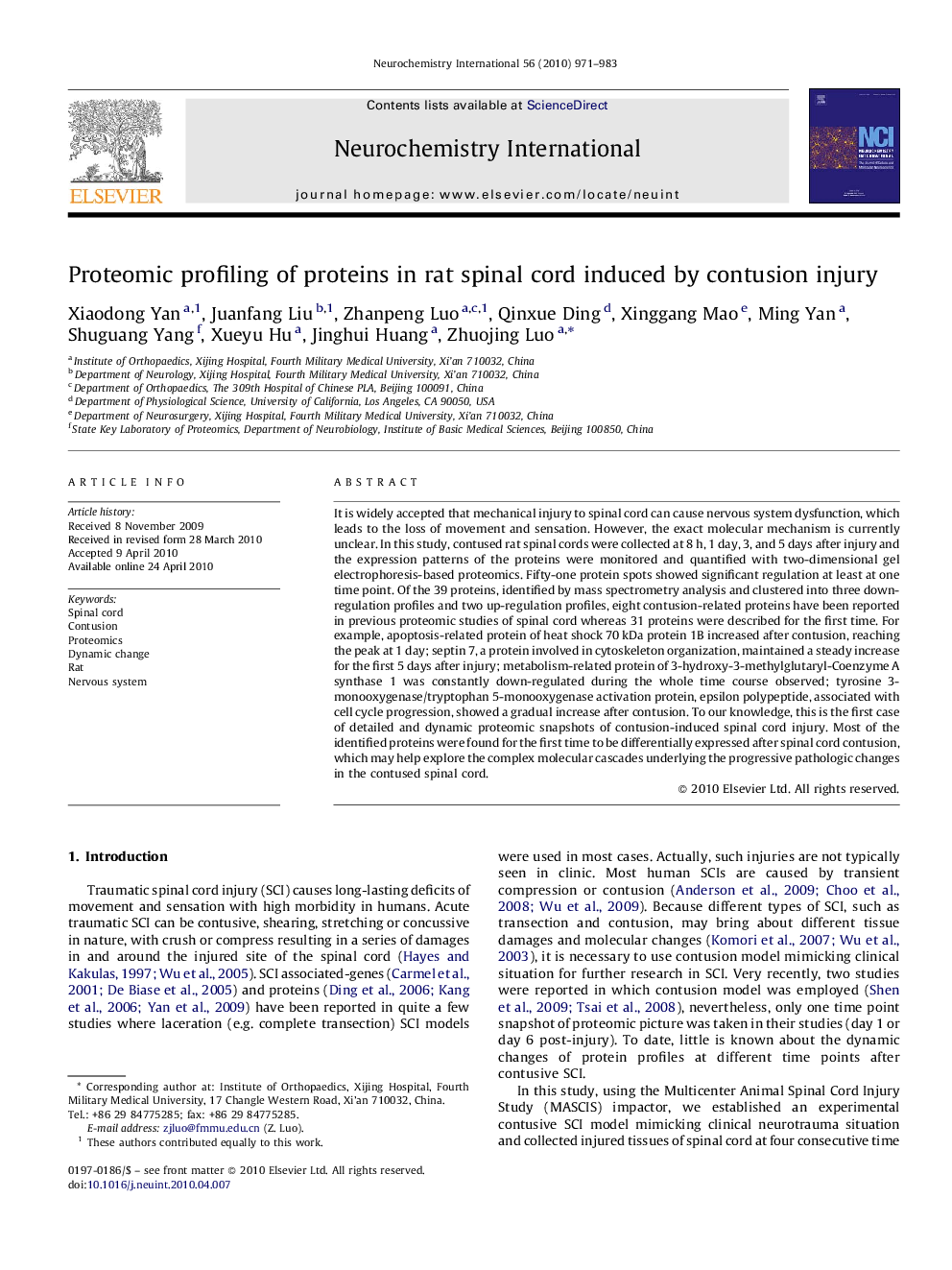| Article ID | Journal | Published Year | Pages | File Type |
|---|---|---|---|---|
| 10958353 | Neurochemistry International | 2010 | 13 Pages |
Abstract
It is widely accepted that mechanical injury to spinal cord can cause nervous system dysfunction, which leads to the loss of movement and sensation. However, the exact molecular mechanism is currently unclear. In this study, contused rat spinal cords were collected at 8Â h, 1 day, 3, and 5 days after injury and the expression patterns of the proteins were monitored and quantified with two-dimensional gel electrophoresis-based proteomics. Fifty-one protein spots showed significant regulation at least at one time point. Of the 39 proteins, identified by mass spectrometry analysis and clustered into three down-regulation profiles and two up-regulation profiles, eight contusion-related proteins have been reported in previous proteomic studies of spinal cord whereas 31 proteins were described for the first time. For example, apoptosis-related protein of heat shock 70Â kDa protein 1B increased after contusion, reaching the peak at 1 day; septin 7, a protein involved in cytoskeleton organization, maintained a steady increase for the first 5 days after injury; metabolism-related protein of 3-hydroxy-3-methylglutaryl-Coenzyme A synthase 1 was constantly down-regulated during the whole time course observed; tyrosine 3-monooxygenase/tryptophan 5-monooxygenase activation protein, epsilon polypeptide, associated with cell cycle progression, showed a gradual increase after contusion. To our knowledge, this is the first case of detailed and dynamic proteomic snapshots of contusion-induced spinal cord injury. Most of the identified proteins were found for the first time to be differentially expressed after spinal cord contusion, which may help explore the complex molecular cascades underlying the progressive pathologic changes in the contused spinal cord.
Related Topics
Life Sciences
Biochemistry, Genetics and Molecular Biology
Cell Biology
Authors
Xiaodong Yan, Juanfang Liu, Zhanpeng Luo, Qinxue Ding, Xinggang Mao, Ming Yan, Shuguang Yang, Xueyu Hu, Jinghui Huang, Zhuojing Luo,
